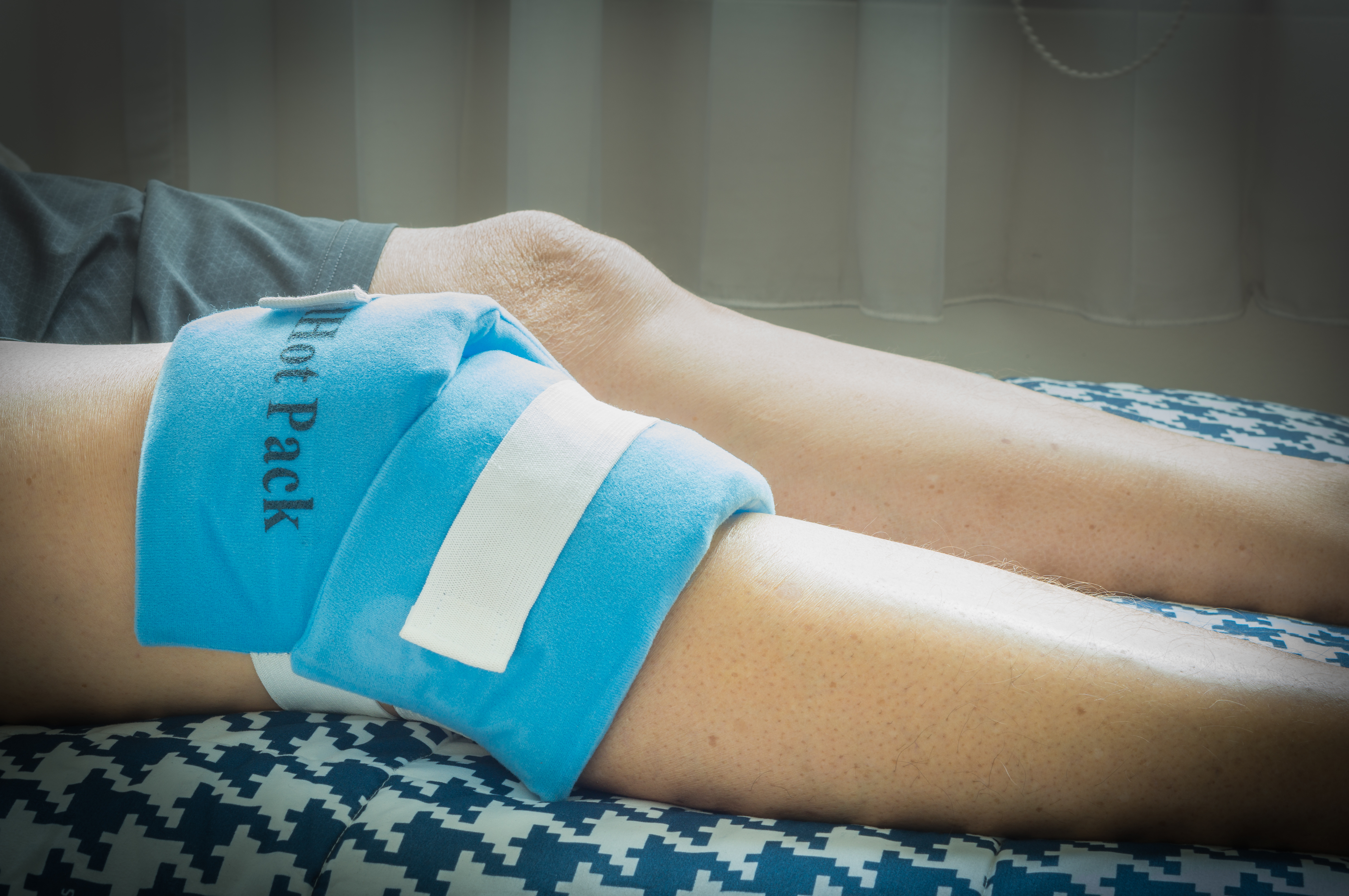
Knee problems can flare up at any age, and they’re inconvenient! In some cases, knee pain can be severe enough that it’s difficult to work out or even get around comfortably. While osteoarthritis of the knee is more common in older people, younger people can experience chronic knee pain due to a condition called patellofemoral pain syndrome, also known as jumper’s knee. No one knows exactly what causes jumper’s knee, but it can hang around for months and cause discomfort when you run, climb stairs, and squat. People who have anatomical problems such as poor knee alignment are more susceptible to jumper’s knee. The other risk factor is knee overuse and muscle imbalances in the lower body. Too much running and jumping are common causes.
Knowing that knee pain can make it hard to exercise and comfortably get around, take steps to lower your risk of knee injury and chronic knee conditions like arthritis of the knee and jumper’s knee. Knees are forced to bear the force of 2 to 3 times your body weight when you go up and down stairs. So, the tendons, ligaments, and muscles that support your knees take a beating! Here are some steps you can take to lower your risk of knee injuries and chronic knee pain when you exercise.
Wear the Right Shoes
Don’t buy exercise shoes based only on how they look or how much they cost. They perform a useful function! Choose shoes based on how well they support your feet. Consider having a professional at a sports store look at your feet and help you select the right shoe. It’s that important. When your feet have proper support, it takes stress off your knees. For example, if you have a low arch, your feet need arch support. Otherwise, you’ll have a tendency to turn your foot inward when you walk or run. If you’ve had knee, foot, ankle, or hip problems in the past, see a sports medicine physician and have them analyze your gait. Anatomic problems can often be corrected with shoe inserts. Correcting existing foot problems and choosing the right shoes are small steps you can take to keep your knees healthy!
Strengthen the Right Muscles
Research shows strong quadriceps, the muscles in the front of your thighs, protect against a knee injury. Having strong quads may also lower the risk of developing knee arthritis by absorbing some of the force placed on the knee when you walk or run. You may have heard that squats are bad for the knees. But research doesn’t support the idea that squats are harmful if you use good form. In fact, squats are beneficial for knee health because they strengthen the quadriceps muscles, the muscle in the front of the thigh that supports the knee. One mistake people make when squatting that places stress on their knees is they let their knees move too far forward when they squat, sometimes to the point that their knees track over their toes. Bad idea! Ideally, you want your knees to move as little as possible when you squat.
Cross-Train Cross-Train
Don’t do the same training over and over. Rather vary the types of workouts you do to avoid repetitive stress injuries. For example, runners are prone toward Achilles tendonitis because they stress the tendons by doing the same repetitive movements without giving the tendons enough time to recover. If you have a history of knee injuries or arthritis, the bulk of your workouts should be low impact. However, low impact doesn’t mean low intensity. You can still get an effective workout without pounding your legs against a hard surface. If you do high-impact exercise, do it on a softer surface to protect your knees. Also, don’t increase the intensity or duration of your workouts too quickly. Give your muscles, tendons, ligaments, and joints a chance to adapt to the stress you place on them.
Correct Muscle Imbalances
Recent research, including a study published in the Journal of Aging Research, suggests that muscle weakness and muscle imbalances play a role in osteoarthritis of the knee. Therefore, strengthening muscles in the lower body symmetrically, including the quads and the opposing muscles, the hamstrings helps maintain balanced strength to support the knees. Studies also show that exercise has an anti-inflammatory effect that may help keep the knee joint healthy and reduce age-related cartilage breakdown. So, make sure your lower body workouts are balanced. Work the muscles in the front of your thighs, the quads, as thoroughly as you work the hamstrings and glutes in the back. Make sure you’re doing core strengthening exercise as well.
Watch Your Weight
Now that you know how much force your knees have to bear when you walk and when you go up and down stairs, it’s easy to see why not becoming overweight or obese is so important. Obesity, along with genetics and prior knee injury, and the biggest risk factors for osteoarthritis of the knee. Fortunately, exercise helps control body weight. Plus, movement helps lubricate the joints and keeps them healthy.
Conclusions
Now, you have a better idea of how to protect your knees when you exercise. You need your knees for a lifetime. Don’t take them for granted when you train. Take steps to protect them and lower your risk of injury. Also, if you have knee pain, stiffness, or your knees are giving out or locking up, see a physician. There are other more serious conditions, like a meniscal tear that can cause knee discomfort too. Don’t ignore knee pain.
References:
Ortho Info. “Patellofemoral Pain Syndrome”
Arthritis Rheum. 2009 Jan;60(1):189-98. doi: 10.1002/art.24182.
Int J Sports Phys Ther. 2014 May; 9(3): 320-328.
PM R. 2012 May;4(5 Suppl):S117-21. doi: 10.1016/j.pmrj.2012.02.011.
Journal of Aging Research. Volume 2011, Article ID 374653, 6 pages.
Short Summary:
.
